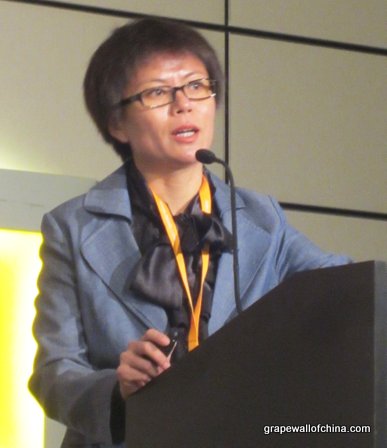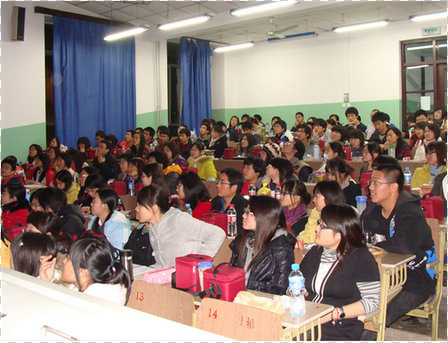
~
Professor Ma Huiqin started a wine appreciation course in 1998 at China Agricultural University in Beijing. Except for a three-year break, when she was doing post-doc work in Stellenbosch in South Africa, Ma has introduced hundreds of students in Beijing to wine each year. While known to many as a molecular biologist and wine marketing expert, Ma also considers her wine class a high priority.
Boyce: Why did you start the class?
Ma: I like wine and I wanted to share it with my students. Back then, wine courses were for students in wine-related programs and only based on book knowledge. I wanted students of all majors to have a chance to taste domestic and international wines, so I created the course. From the very beginning, the course has been an elective. Students who pass get a credit.
Why do students take the class? Who tends to take it?
They take it because they want to understand and appreciate wine. They also want to understand wine culture, social experiences and general manners in other parts of world.
The class is usually half men and half women. In 2004, it became an elective for seventeen universities in the Haidian district. [This is an area in north Beijing with many schools.]
What does the course involve?
The fall course is for students from China Agricultural University. In includes 24 hours of classes, with 12 for teaching and 12 for tasting. The students taste a total of 16 wines.
The spring course is open to students from other schools in Haidian. That course is 30 hours long, divided between teaching and tasting. The students taste 20 wines.
Each student buys a carrying case with four glasses for rmb50. It used be rmb20 but glasses have become more expensive.
How has the class changed over the years?
At first, there were 120 students per class, now there are 220 students. In the early days, two-thirds of the students had never tasted wine. If you asked them what they expected it to taste like, they would say sweet and sour. Today, only about 10 percent of the students have no wine or alcohol experience. Most have tasted wine at least once.
Do students prefer red or white wines? Do they prefer wine from any particular country?
I survey the students and overall they pick white wine every time. The students find white wines more aromatic, easier to understand and lighter.
In terms country, it is hard to say, because the students don’t taste expensive wines. At entry-level prices, it is hard for the “old world” to compete with the fruity “new world” wines.
When students finish the course, what do you hope they have learned?
Basic wine knowledge and wine tasting skills, confidence when facing a wine, and open-mindedness to both Chinese and international wines. I hope they understand the concept of moderate consumption, of drinking for enjoyment, of learning to listen to their bodies and tastes. And I also hope they get more sensory enjoyment in their lives, such as appreciating the aroma and texture of fruits and other foods..


Grape Wall has no sponsors of advertisers: if you find the content and projects like World Marselan Day worthwhile, please help cover the costs via PayPal, WeChat or Alipay.
Sign up for the free Grape Wall newsletter here. Follow Grape Wall on LinkedIn, Instagram, Facebook and Twitter. And contact Grape Wall via grapewallofchina (at) gmail.com.

Leave a Reply
You must be logged in to post a comment.